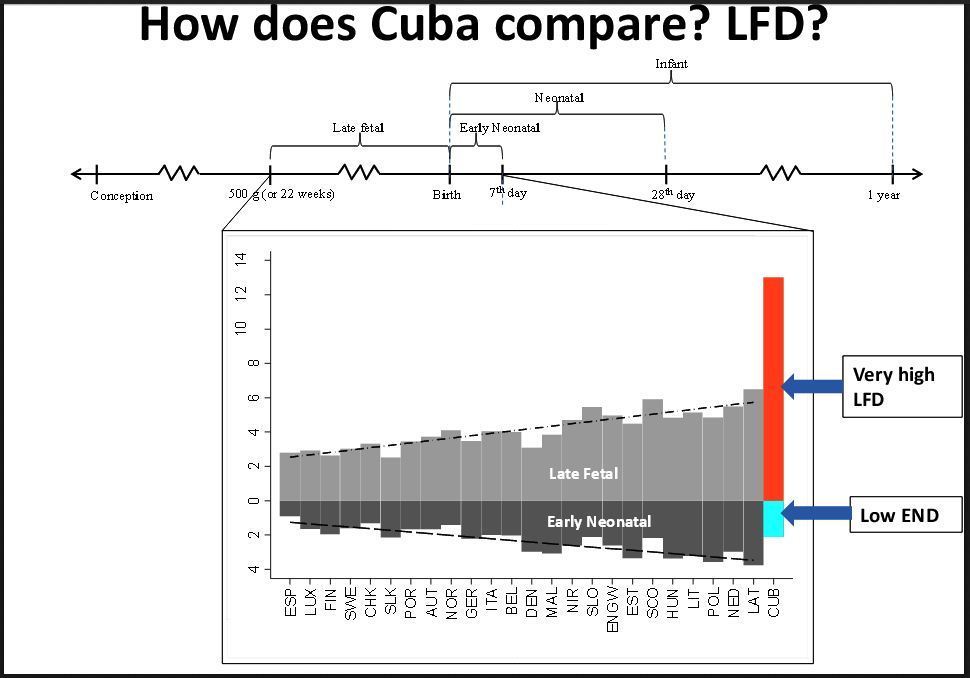Roberto M. Gonzalez, Department of Economics, UNC, Chapel Hill
An interesting paper on Cuba’s Infant Mortality Rate (IMR) was presented at the 2013 meetings of the Association for the Study of the Cuban Economy by Roberto M. Gonzalez, a graduate student in Economics at the University of North Carolina. The paper is especially interesting as it focuses on one important indicator of the quality of the health system, human development and socio-economic development which ostensibly has been a major achievement for Cuba. Cuba’s exceedingly low Infant Mortality Rate has been a major “logro” of the Revolution and a source o pride since the early 1960s.
Gonzalez presents information and analysis that casts some doubt on the official IMR figures. His complete argument can be seen in the Power Point presentation that he made at the ASCE meetings here: Infant Mortality in Cuba
The essence of his argument is that Late Fetal Deaths (LFDs) or deaths of fetuses weighing at least 500 grams are abnormally high in Cuba compared to other countries while Early Neonatal Deaths (ENDs) or deaths occurring in the first week of life are abnormally low. In the chart below, Cuba’s high LFD in orange and its low END in green can quickly be seen as outliers for the countries of Europe.
 What’s going on here? Perhaps it is reflects an erroneous mis-classification system, or purposeful mis-reporting or possibly late term and mislabeled abortions (if there is any chance of infant ill-health or a congenital health problems.)
What’s going on here? Perhaps it is reflects an erroneous mis-classification system, or purposeful mis-reporting or possibly late term and mislabeled abortions (if there is any chance of infant ill-health or a congenital health problems.)
While perhaps further work is needed to analyze this LFD-END puzzle, Gonzalez work has certainly raised serious questions about Cuba’s long-vaunted Infant Mortality Rate.


